Where to See Crocodiles in Cancun And How to Avoid Dangerous Situations
Whether you want to avoid or see Crocodiles in Cancun, this post will help you decide where to go or not to go. 🙂
Mainly renowned for its stunning beaches and vibrant nightlife, Cancun is also a place where you can enjoy observing amazing wildlife, always in its natural habitat.
From the cute coaties (which can also bite, if you get too close, mind that!) to colorful birds and thriving marine life, there is a lot to see if you want. At the same time, it is easy to avoid it if you are not fond of wildlife.
And Crocodiles are no exceptions. As apex predators, crocodiles play a crucial role in the ecosystem of the Nichupte’ Lagoon. So yes there are crocodiles in the huge lagoon complex that separates the Hotel Zone with downtown Cancun. But this is not the only place where you can see them. In this post, I will tell you all about it and how to avoid unpleasant encounters.
I have lived in Cancun since 2010, and I have never seen a crocodile. However, I know for a fact that unpleasant accidents have made the news, and if you walk along the hotel zone, you will see signs warning you against possible crocodile presence by the lagoon.
Visiting a crocodile sanctuary or a zoo (only if) with a focus on wildlife conservation offers another secure viewing option. Interactive exhibits and knowledgeable staff can provide deeper insights into the life cycle and threats facing these ancient creatures. Whether you’re a wildlife enthusiast or just looking for a unique addition to your Cancun itinerary, observing crocodiles in these settings can be a memorable experience.
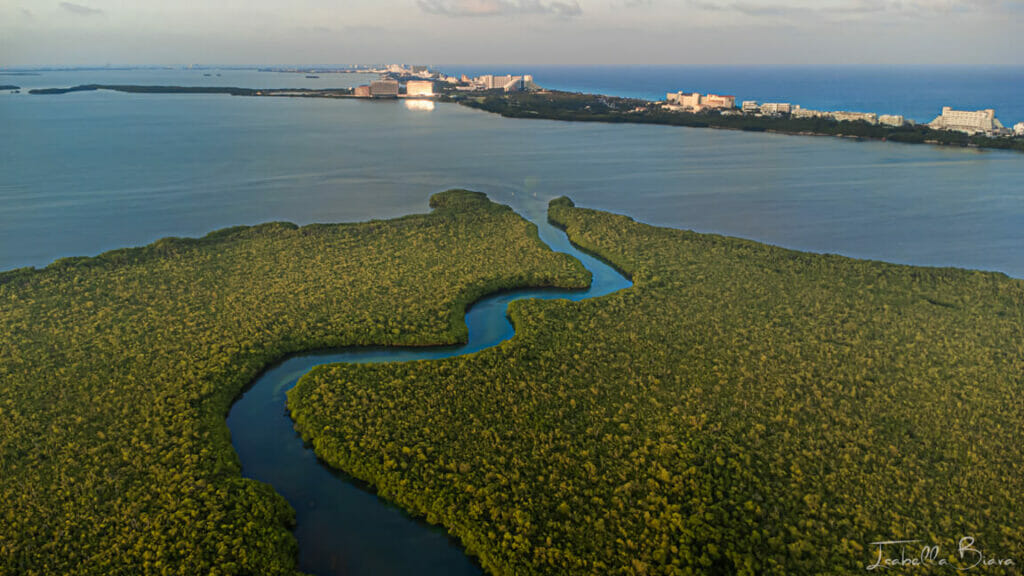
Disclaimer: This page may contain affiliate links. If you make a purchase using one of those links, I may earn a commission at zero cost for you. You can read my disclaimer policy and privacy policy.
Habitat and Locations
Cancun is a renowned crocodile habitat, offering numerous spots where you can safely observe these fascinating animals in their natural environment.
Punta Nizuc: An ideal site for spotting crocodiles basking in the mangroves
There is a spot by the Nizuc bridge (see picture below) where you can easily see local fishing and kids swimming. I went there and asked if it wasn’t dangerous because of crocodiles. I was told it was not, but I wouldn’t swim there.
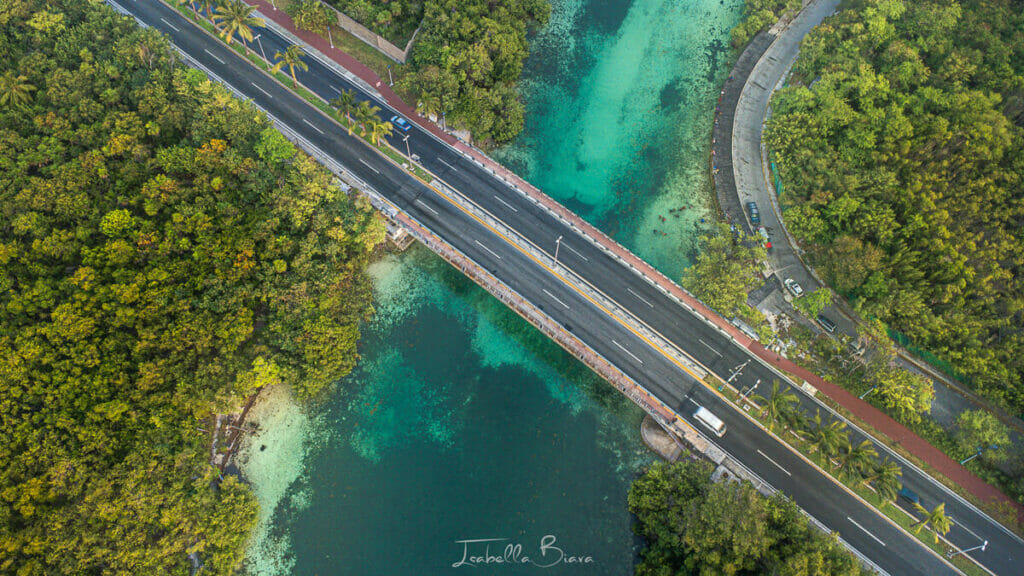
Sanctuary Reserve of Mangroves of Nichupté: A natural habitat where crocodiles coexist with diverse Cancun wildlife
The Nichupte Lagoon is a natural reserve and protected area where you can observe different mangrove species and thriving wildlife.
I went paddle boarding in the Nichupte’ lagoon, but I wouldn’t do it again, especially unsupervised, because you can easily fall. However, I believe kayaking is safe. There are kayaking tours, which I have done multiple times, and the guides know where the animals usually dwell. The waters in the lagoon are very calm, and it’s unlikely that you will fall.
It’s a great way to observe birds if you go in the morning before motor boats start roaring around
If you walk along the sidewalks on the lagoon side in Cancun Hotel Zone, instead of by the Nichupte’ lagoon, you will find signs that warn you against crocodile presence. This is because there have been unfortunate episodes in the past where crocodiles have been wandering along roadside.
We have been invading their space after all. So exercise cautions when walking on that side of the road or don’t walk there at all.
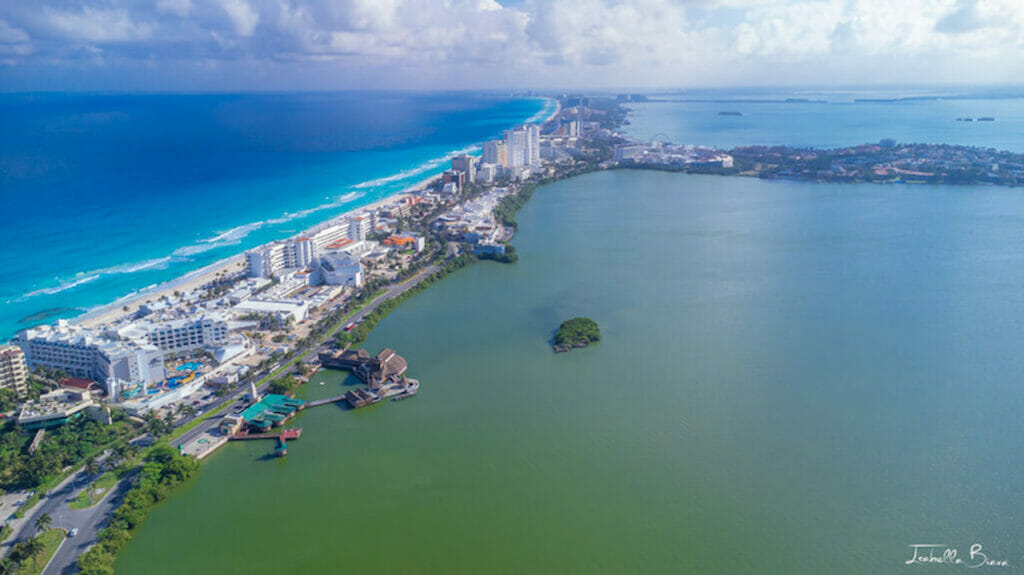
Croco Cun Zoo: Encounter crocodiles up-close in a controlled environment
I am not a fan of Zoo, and I always discourage anyone from watching animals kept in captivity for human entertainment, especially when it comes to dolphins.
However, it appears that Croco Cun is not a proper zoo. This is what they say about themselves:
Croco Cun did not start as a zoo, however, our Riviera Maya destination ecological needs, have turned us into a very peculiar one. Most of the specimens have come to our home as donations, as well as rescues or seizures that the environmental authorities have placed under our care.
Crococun
The residents of our zoo play an important role in the fauna conservation through education and interaction with our visitors.
I haven’t been there, so I can’t really say. But I am including the information here in case you feel like investigating further.
Safety and Viewing Guidelines
- Distance: Maintain at least a 5-meter distance from crocodiles.
- Feeding: Never attempt to feed crocodiles; it’s illegal and dangerous.
- Guided Tours: Consider joining a guided tour for educational insights and increased safety.
Best Times to See Crocodiles
In Cancun, you’ll have the best chance of seeing crocodiles by understanding their seasonal and daily patterns.
Seasonal Behavior Patterns
Crocodiles in Cancun tend to be more visible during the wet season, from June to November, when their natural habitats are replenished and food sources are abundant. During these months, you’re more likely to encounter these reptiles basking in their habitats or engaging in feeding activities.
- Wet Season: June – November (Increased Visibility)
- Dry Season: December – May (Reduced Visibility)
During the dry season, crocodiles may become more elusive as water sources shrink. Sightings can still occur but require more patience and potentially guided tours for better chances.
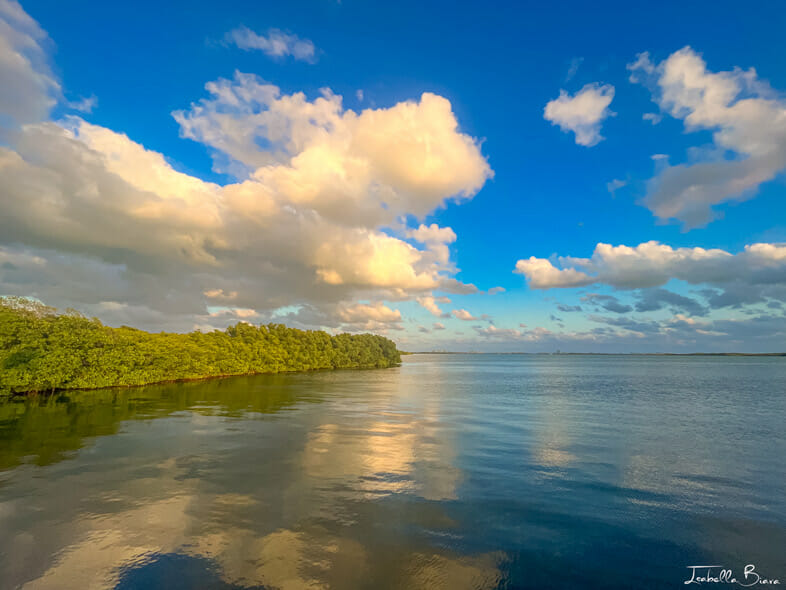
Daily Activity Cycles
Crocodiles are ectothermic, relying on the environment to regulate their body temperature. They exhibit distinct daily activity cycles that you can use to plan your viewing.
- Morning: Ideal for observing crocodiles as they bask in the sun to warm up.
- Midday: They often retreat to shaded areas or water to cool down, which can make them harder to spot.
- Evening: As temperatures drop, crocodiles become more active again, providing another good opportunity for sightings.
Remember, while you may see crocodiles at any time of day, dawn and dusk offer higher chances for encounters. Always maintain a safe distance and consider scheduling tours with knowledgeable guides to enhance your experience.
Crocodile Tours and Excursions
When in Cancun, you have the unique opportunity to observe crocodiles in their natural habitat through various tours and excursions specifically tailored for wildlife enthusiasts.
Guided Tours
Guided tours offer a safe and informative way to see crocodiles up close. Professional guides, knowledgeable about crocodile behaviors and habitats, will lead you through the mangroves and regions where crocodiles are known to dwell.
- Rio Lagartos Biosphere Reserve: A popular destination for crocodile sightings. Booking a tour here often includes a boat ride through the mangroves.
- Croco Cun Zoo: A guided walk through this interactive zoo allows for crocodile encounters and educates about conservation.
- Nichupte’ Lagoon: there are kayaking tours but they rarely see crocodiles
Guides are equipped to ensure your safety and provide valuable insights into the lives of these fascinating reptiles.
Conservation Efforts
When you visit Cancun, you’ll witness firsthand the efforts to protect its unique wildlife, including crocodiles. These initiatives are critical for maintaining the balance of local ecosystems and ensuring species survival.
Protecting Crocodile Habitats
Habitat Protection: In Cancun, preserving the natural habitats of crocodiles is a priority for conservationists. Encroachment and development pose significant threats, but legislation and local support play a key role in habitat preservation. Protected areas and wildlife reserves have been established specifically for this purpose.
Regulated Tourism: While tourism is a major economic driver in Cancun, activities are carefully regulated to minimize human impact on crocodile populations and their habitats. Your visit to crocodile habitats will be subject to guidelines intended to safeguard these animals.
Environmental Education: Educating the public about crocodiles in Cancun is another approach to conservation. By teaching locals and visitors the importance of these animals and how to coexist with them safely, conservationists aim to reduce conflicts and promote a culture of respect and protection.
Research and Monitoring: Ongoing research and monitoring of Cancun’s crocodile populations provide data that are essential for informed conservation actions. This includes tracking crocodile numbers, health, and behavior, which helps in adapting management strategies as needed.
Frequently Asked Questions
Where can I see crocodiles in Cancun?
Is it safe to observe crocodiles in Cancun?
What’s the best time of year to see crocodiles?
Early morning or dusk are ideal times of day.
Check weather conditions, as they can affect crocodile activity.
Can I feed the crocodiles in Cancun?
How large are Cancun’s crocodiles?
Where to see crocodiles in Cancun
I hope this post was helpful. Please remember to respect wildlife and follow local regulations for a safe and enjoyable experience.


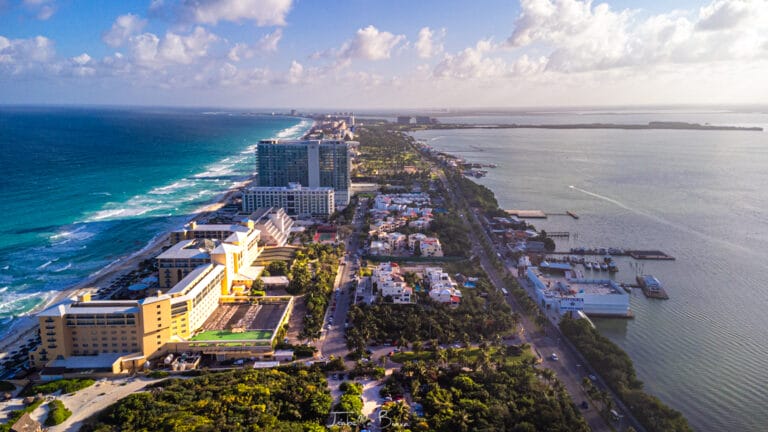
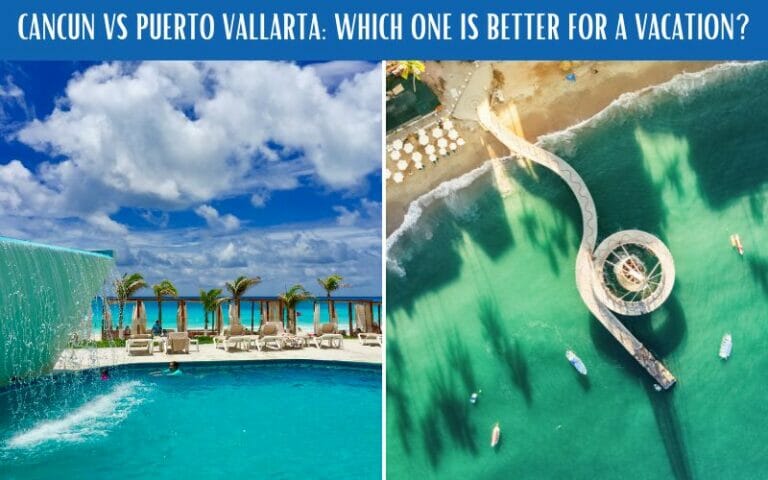
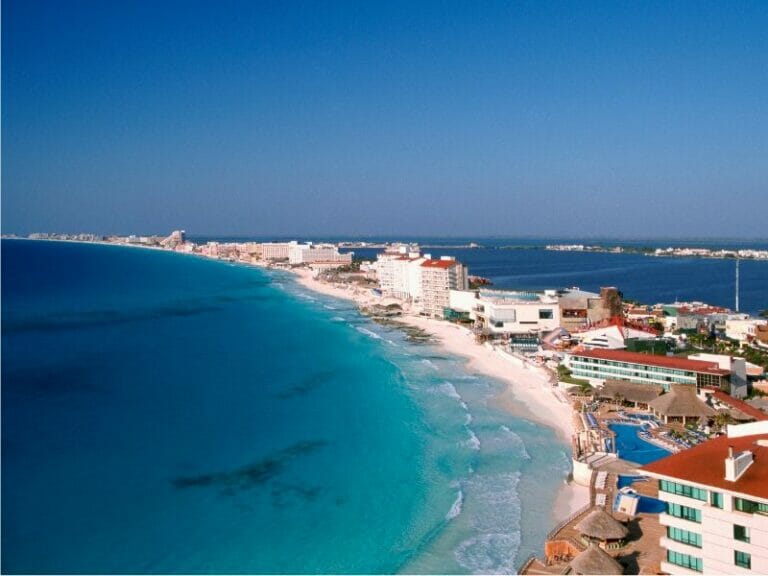
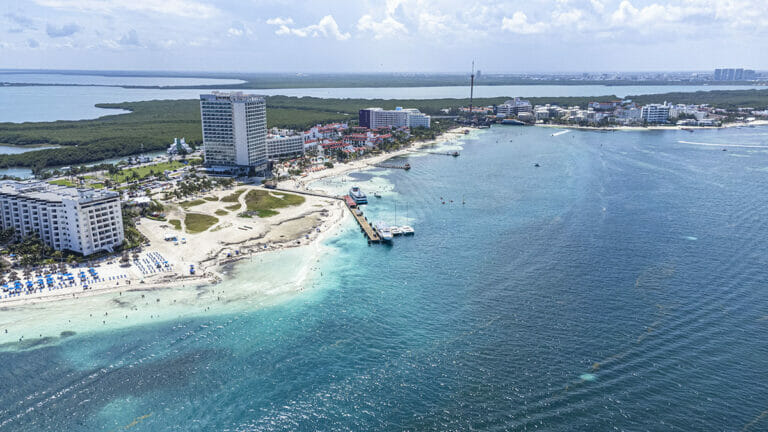
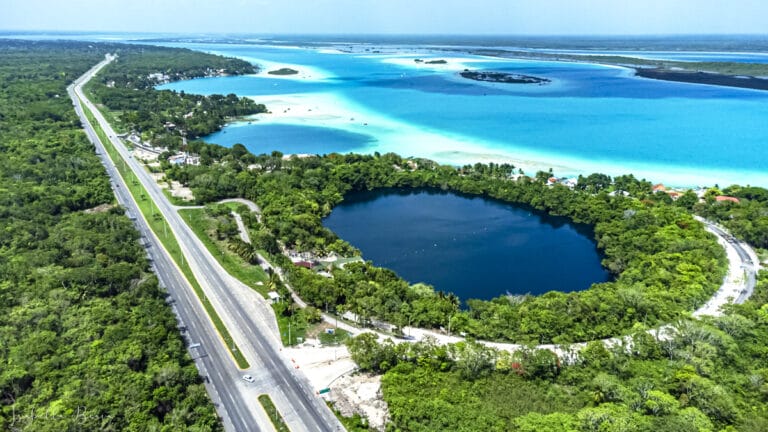
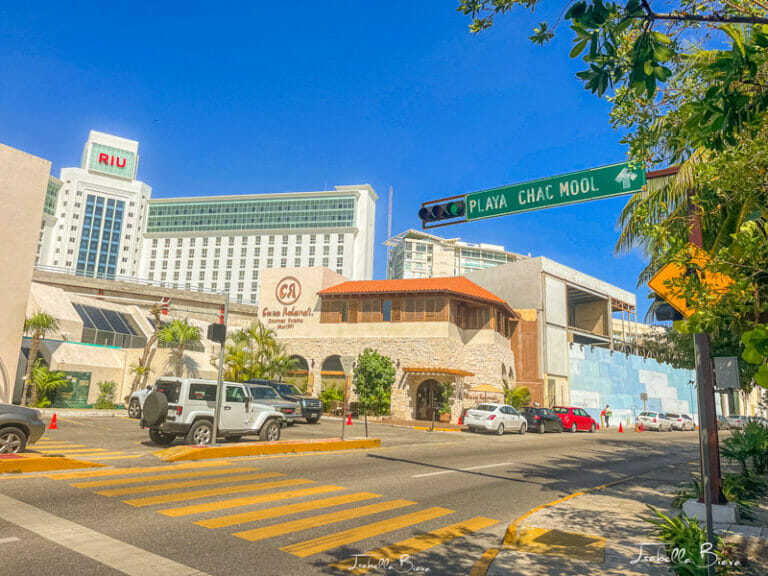
Hi! Can’t believe you have never seen a crocodile. We are currently here on holiday (now been here a week) and today we saw a crocodile in the lagoon at the bottom of where we are staying! It was an amazing sight!
I know right? It’s crazy. I have even kayak and paddleboard in the lagoon multiple times and never saw one:) Glad you saw it. Enjoy your holiday
I saw two crocodiles in and near the lagoon on my first day in Cancun. They’re incredible. One was in the lagoon right by the breakfast area of Mayan Monkey, and the other one was right next to the sidewalk on the hotel zone-side of the lagoon.
OMG how lucky you are! I have never seen one in Cancun in 14 years haha. I have even been kayaking and paddle boarding in the lagoon. Nada! 🙂